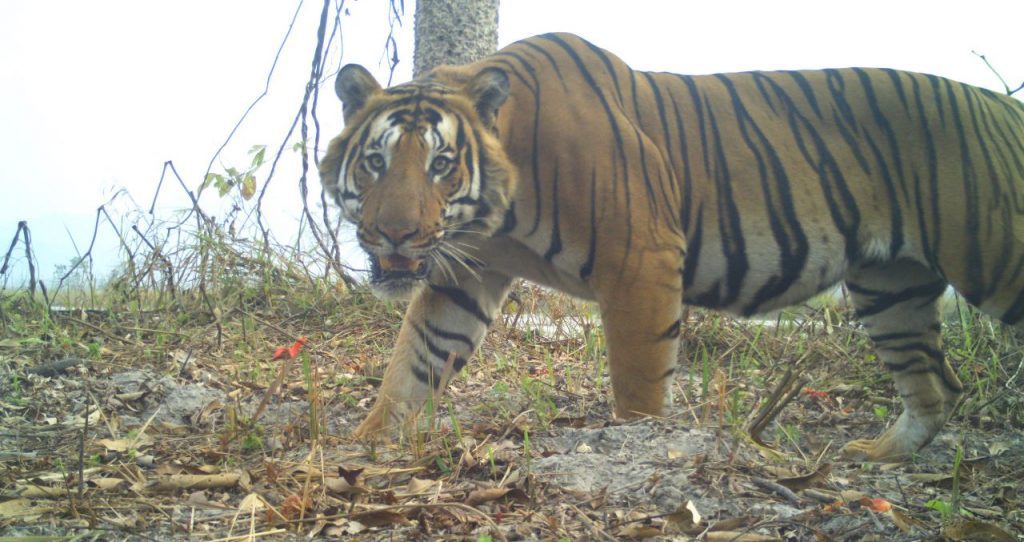On the occasion of 50 years of Project Tiger on April 9 this year, PM Modi released India’s latest Tiger Census 2022 in Karnataka’s Mysuru. The whole nation rejoiced as the tigers number has remarkably increased. It has reached now 3682, while in the last census, it was 2967. On 29 July, on the occasion of Global Tiger Day, Union Minister of State for Environment, Forest and Climate Change, Mr. Ashwini Kumar Choubey released the new lists consisting of state and tiger reserve-wise breakup of the census and ratings of tiger reserves. This time again, it was a happy moment for states and tiger reserves, but for Odisha, it was not so good as the state once again saw the number of tigers diminishing.
It has now triggered an alarm for the state as the latest tiger census shows only 20 tigers are left in Odisha and all are in the Simlipal Tiger Reserve which is famous for the rare black tigers. On the other hand, Satkosia Tiger Reserve, Odisha’s second tiger reserve, has zero number of tigers. In the last census in 2018, Odisha had 28 tigers. Tiger census is done in every four years and when it was first started in 2006, then the number of tigers in Odisha was 45. Since then, the number in Odisha has continuously been on a sharp decline.
Experts says that the main reason behind this is rampant poaching, while the state officials in Odisha have other views. They have raised questions on the methodology of counting the tigers based on camera traps.
Indian Masterminds spoke with many officials of the state to know why the tigers number is declining.
THE NUMBERS
Odisha has only two notified tiger reserves. But more than half the tigers of the state had vanished in 2006. While the number of tigers in India has seen a sharp annual rise of 6% in total, Odisha’s story is different. Deviating from the trend, Odisha has 20 tigers, down from 28 in 2018, and a 55% fall since 2006, when the state had 45 tigers. Similipal had 27 tigers in last census, while Satkosia has 1, but now there are 20 in Similipal and 0 in Satkosia.
Speaking with Indian Masterminds, Mr. Susanta Nanda, a 1989-batch IFS officer and PCCF (Nodal), Odisha, said, “It’s a problem of different landscapes. In other states like Jharkhand, West Bengal, etc., it has been seen too. The census has shown only data from the two tiger reserves of Odisha. We are not disputing the central figure, but we are going to do our own survey and it will be completed in about 4 months. We will do our survey in the whole state and all the sanctuaries. We want to see why the numbers differ, because with our own estimation, the numbers should be more.”

METHODOLOGY
Will there be a different methodology? Mr. Nanda replied, “It will be same, not much different. But, we want to just find out what really happened. The census has shown tigers only in Similipal. It seems that they are taking dada from only two tiger reserves. But Odisha has a very large landscape and dense forests, and there are other places where tigers exist.”
NTCA’s methodology for tiger counting has been based on camera traps and the prey-based method, since 2006.
An officer in an Odisha Tiger Reserve, on condition of anonymity, said, “Census is not 100 percent reliable. At many dense places, camera trap cannot give the real picture. Central Odisha has very dense forests and camera traps do not catch everything there. There will be presence, but it will not reflect. That is why deviation could be there.” He further pointed out that if tigers are out of protected areas, that will not be counted because there are no camera traps there, and this is the problem in large landscape, too.”
Officials in Odisha also say that as the census exercise was carried out around 2021, when many tigers, who are adults now, were cubs, and, thus, they were not counted.

POACHING
Is poaching a concern in Odisha? Mr. Nanda replied in the negative. “Poaching is not a concern here in any more. Hardly any cases of tiger poaching are reported here.”
While many wildlife experts blame rampant poaching for the worrying decline in tiger numbers everywhere, some also believe that there’s a need to increase the tigers’ prey base to ensure sustainability.
Anup Nayak, former Additional Director General (Project Tiger) of the NTCA, said, “There is a need to increase prey base in Odisha. If tiger population has to sustain there, they have to do something about this. Though Odisha is a good habitat for tigers, the officials should ensure that the population of chital, sambhar and deer increases.”
As ordered by Chief Minister Naveen Patnaik in May this year, government will be carrying out the estimation themselves in the state from October, 2023. SK Popli, an IFS officer of 1987 batch and Principal Chief Conservator of Forests (Wildlife), Odisha said, “This exercise will provide the updated status of the tigers in the state.”
In the latest tiger census, Madhya Pradesh has the most number (785) of tigers, followed by Karnataka (563), Uttarakhand (560), and Maharashtra (444). A detailed report on Management Effectiveness Evaluation (MEE), which is the most important tool in tiger conservation, shows that Odisha’s Similipal Tiger Reserve achieved ‘Excellent’’ category and ranked 11 in MEE-2022 Report, the only positive point for Odisha.

































